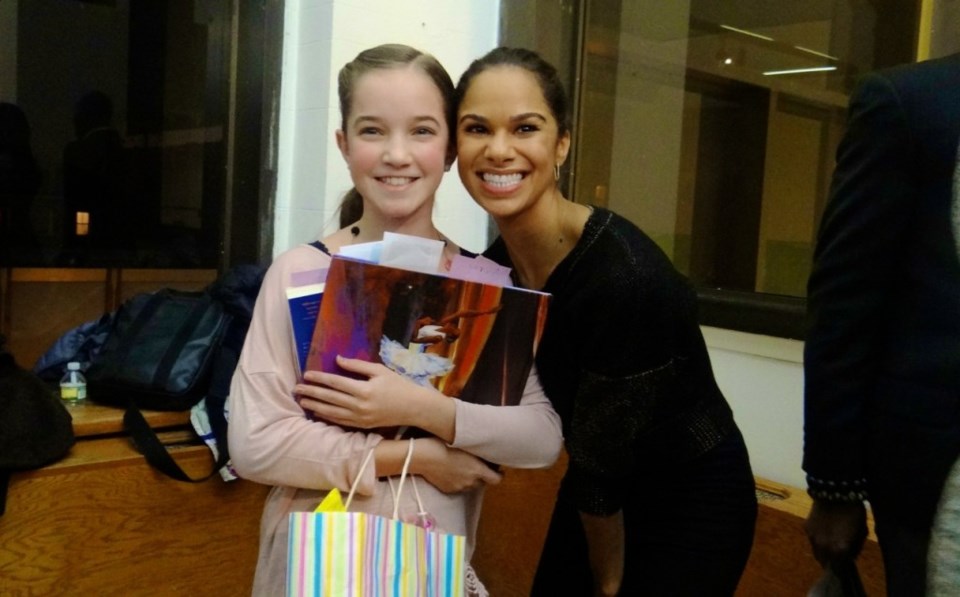
Photo: The Brooklyn Reader
"You're my idol; you're the reason why I run every day," gushed a fan, after arriving at the front of the line to get her booked signed by superstar ballerina Misty Copeland. The fan was around 50 years old.

Men and women, young and old, from every background and across all boroughs packed into Restoration's Skylight Gallery Monday night for a glimpse at the young ballerina who has been on everyone's lips: Misty Copeland.
Copeland, the third African-American soloist ballet dancer and the first in two decades to dance for the American Ballet Theatre (ABT), was in Bedford-Stuyvesant, Brooklyn, for a book-signing of her latest memoir, "Life in Motion: An Unlikely Ballerina."
Joining her at the book signing was Bed-Stuy resident Christopher Myers, award-winning illustrator for Firebird, a children's book by Copeland about overcoming obstacles and realizing your full potential through hard work and dedication.
Dozens of little girls waited in the long line, along with their parents, clutching their copies of Firebird in squirmy anticipation of Copeland's signature, a smile and a possible "selfie."
The glimmer in everyone's eyes as they waited in line for Copeland could be described in only one word: inspired.
Following the book-signing was a talk-back discussion with Copeland and Myers, moderated by Indira Etwaroo, executive director for the Center of Arts and Culture at Restoration.
Etwaroo called Misty Copeland a "21st Century Artist," referring to Copeland's success in arousing an interest in professional ballet by people of all ages and from around the world.

"You are a woman who has found a voice in a very voiceless field," said Etwaroo. "And it makes you such a dynamic figure for artists, because you claimed your voice and you own it so beautifully."
Copeland said, once she made the decision to train professionally as a ballet dancer, she had no choice but to claim her voice-- particularly as an African-American woman whose body type was not that of a traditional ballerina and also because of her childhood experiences as someone who often struggled to find her place at home, at school and in the world.
Copeland pointed to precedence, history and those that came before her as inspiration. She decided that if she was going to blaze a trail, she would have to do it as her truest self, to inspire others to do the same.
"That's how I found my acceptance in the ballet world ... knowing that there were other [African-American ballet dancers] that came before me and others with me, although I couldn't see them all the time," said Copeland.
"But as ballerinas, it's a part of what we do. We have so much respect for those who came before us. That's how we learn the techniques-- it's carried on from person-to-person over hundreds of years. It's just passed down knowledge. So I think as ballerinas, we have this innate respect for our elders, and for the history of ballet."

Photo: The Brooklyn Reader
Copeland said she was aware of the role she might play in history, so the example she wanted to set was one of someone who was unafraid to follow their passions, despite the odds stacked against them, and who was willing to sacrifice through hard work, discipline and perseverance.
"I just want to share my journey and be that person for all of those who have struggled with their identify, accepting who they are and being accepted," said Copeland.
"This is for the little brown girls. But it's also for all those people who have struggled with fitting in, being told 'no,' that they couldn't do something. This is for them."
You hold the power of your instrument. That instrument comes in all shapes, sizes and colors. That instrument is your body, soul and heart. That instrument is you and me.
-- Excerpt from Firebird, by Misty Copeland and Christopher Myers




